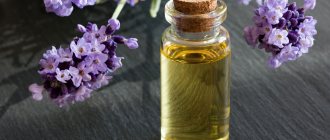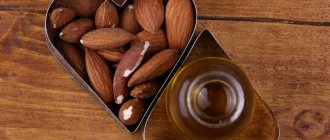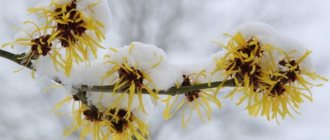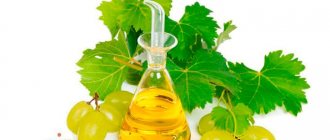Nowadays, the choice of cosmetics and medicines is very diverse. We are used to living in cities and using products from the chemical and pharmaceutical industries. But when faced with complications, side effects or low effectiveness of synthetic products, we remember the natural medicines found in plants. These include essential oils, successfully used in cosmetology, medicine, aromatherapy and esotericism. Frankincense oil, exotic for our country, has, in addition to a pleasant aroma, numerous beneficial properties.
Composition and healing properties of frankincense oil
Frankincense is the name given to the aromatic resin of plants of the Boswellia family: Boswellia carterii, Boswellia sacrum, Boswellia pupurifera, growing in India, Somalia, Yemen, Ethiopia, Sudan.
The name "Frankincense" incense comes from the phrase "incense of Franks", which means "Frankish incense", since it was supplied through intermediaries - the Franks
In Soviet times, boswellia was successfully grown as an ornamental plant on the Black Sea coast in Sochi and Crimea.
Frankincense is used in its pure form or to make essential oil. In ancient times, it was believed that the smell of incense clears the mind and frees the soul from sorrows and fears. Indeed, this aroma relaxes and brings a feeling of calm.
When released, the resin of the incense tree is milky white in color, and as it dries it becomes transparent with a yellowish tint.
Nowadays, incense and its derivatives are used in church rituals and for meditation. Researchers have discovered a substance called incensol acetate in incense smoke, which acts as an antidepressant in animals and humans.
Frankincense was used widely in ancient Egypt, including for embalming. It is surprising that when opening ancient tombs, whose age is estimated at thousands of years, archaeologists felt a barely noticeable aroma of incense.
High-quality oil is a light yellow or greenish liquid with a warm, sweetish odor. It consists of ketone alcohol, resinous substances, terpenes and other components. The healing properties of the oil are provided by monoterpenes and sesquiterpenes. These hydrocarbon substances have a multifaceted effect: antitoxic, antiseptic, antibacterial, analgesic, expectorant. They speed up metabolic processes in the body, increase immunity and calm.
The aroma of incense is sweetish, interspersed with lemon notes, spicy, woody, very warm and soothing.
Frankincense extract is widely used:
- in perfumery production - to create fragrances;
- in aromatherapy - to change the psychophysiological state of a person;
- in folk medicine - for the treatment of diseases;
- in cosmetology - to improve the condition of skin and hair;
- in the treatment of neuroses, insomnia, stress and other psychological disorders;
- for massage and relaxing baths;
- for meditative and esoteric practices.
What is incense
The Arabs compared it to the tears of the gods. The Chinese called it the fat of the sacred flower. Europeans in the Middle Ages called it .
” The well-known word “incense” comes from the Greek word “incense” (to become godlike). Many have heard about it, but don’t know exactly what incense is and what incense is made from. From a botanical point of view, incense is the hardened resin of certain types of trees. It is most often extracted from the Boswellia cedar of Lebanon. The main regions where trees grow are East Africa, the Somali Peninsula, and the Arabian Peninsula.
To obtain the aromatic substance, deep cuts are made on the tree trunk at the end of winter. Milky juice begins to ooze through them. He tightens the notch and freezes in the air. The dried substance is called gum. About 400 grams of gum are collected from one tree. By type it can be:
- selective;
- ordinary.
Select or “dewy incense” is shaped like droplets of matte pink or pale yellow. It has a balsamic aroma and taste. When ground from selected oliban, a white powder is obtained.
The common olibanus has a dark, opaque color. Its pieces are irregular in shape and large in size.
Hair care
Frankincense oil strengthens hair, gives it strength and shine. The active substances of the oil nourish the hair follicle, penetrate inside the hair, strengthening and moisturizing it. A major role here is played by resinous substances that predominate in the composition of the product. Frankincense extract eliminates dandruff, dry scalp and prevents split ends.
The easiest way to use frankincense ether is aromatherapy. You need to apply 3 drops of oil to a comb every day and gently comb your hair from roots to ends for 5 minutes, distributing the product over the entire length. After this procedure, the hair becomes smooth, acquires shine and a pleasant aroma.
A few drops of frankincense oil on a wooden comb will smooth and scent your hair.
When washing your hair, it is recommended to add a little frankincense oil to your care products (shampoos, masks, conditioners).
A daily scalp massage with a mixture of alcohol (50 ml), lavender oil (10 drops) and frankincense oil (5 drops) will help prevent hair loss.
Regularly massaging your scalp using frankincense oil will speed up hair growth, making it stronger and shinier.
Eliminate excessive hair loss
A common problem for girls is excessive hair loss, which is usually caused not only by a lack of vitamins, but also by improper care. You can solve this like this:
- Mix jojoba oil (3 tablespoons) with lavender oil (20 drops), rosemary (5 drops) and frankincense (2 drops).
- Generously lubricate your hair with the mixture, wrap it with film and cover with a warm towel.
- Leave for 30 minutes, then rinse with shampoo.
- Repeat the procedure once every 3 days until excessive hair loss is eliminated. This mask strengthens the roots well.
Getting rid of split ends
The following mask will help restore the structure of split ends:
- Dilute 5 drops of an oil solution of vitamins A, E and frankincense oil in half a glass of olive oil.
- Comb your hair well and apply the product over the entire length.
- Wrap your head in film and a towel, leave for an hour, then rinse.
By repeating the procedure once a week for a month, there will be much less split ends.
Restoring damaged hair
This recipe will help moisturize and nourish damaged hair:
- In shea butter (4 tablespoons), dilute 2 drops each of mandarin, ylang-ylang and incense esters.
- Generously lubricate hair from roots to ends.
- Wrap in film and a towel and leave to soak for 2 hours, then rinse.
- Apply 1-2 times a week, depending on the condition of the hair.
Moisturize dry hair and activate its growth
This hair rinse will be an excellent addition to your basic hair care:
- In 1 liter of boiled or distilled water, dilute 2 drops of extracts of frankincense, myrrh, sandalwood and chamomile.
- After washing, rinse your hair with this solution. Do not rinse off.
Labdanum properties and use in cosmetics
- Geography of our products
Labdanum is the resin of a low shrub, which is also called rock rose or Cretan incense. It is distributed along the entire coast of the Mediterranean Sea, the Western Caucasus and Southern Crimea.
The plant grows up to 3 m in height, has lanceolate leaves, pubescent below with white down. Cistus blooms with white or pink fragrant flowers, and its branches are covered with a resinous coating or resin granules. Even a thousand years BC, this resin was used in ritual ceremonies, separating it from the branches by heating them in water.
Labdanum essential oil is obtained by distillation; it has a dark green or brown color and a bright, memorable odor. Perfumers use this woody-amber aroma to create chypre and fougere compositions. Cistus is also used in medicine - it is an excellent remedy for strengthening the immune system. The plant contains substances that force the human body to produce antibodies to infectious agents.
Beneficial features
The healing properties of cistus have been used since ancient times. In the Arab world, this plant is used as an antispasmodic, antidiarrheal agent and for the prevention of various gastrointestinal infections. Labdanum oil is a good remedy for persistent coughs and chronic colds, as it has antitussive and expectorant properties. It is also used to improve digestion and stimulate appetite.
Labdanum essential oil is used in aromatherapy. Its smell helps to cleanse the mind, relax, and create a positive attitude. Palm oil improves mood, gives confidence, and harmonizes relationships between men and women.
Interesting fact
Due to the similarity in names, frankincense and cistus essential oils are often confused, although they are obtained from completely different plants. Cistus oil is not as expensive as frankincense oil, so it used to be sold as a cheap substitute for frankincense.
Use in cosmetology
Cistus is used in cosmetology to care for oily and problematic skin. It eliminates inflammation, boils, pustules and difficult-to-heal wounds well. Labdanum essential oil is recommended for the care of skin prone to rosacea. It stimulates blood circulation and eliminates congestion, which is why it is included in remedies against spider veins and capillary mesh.
Labdanum preparations are included in hair care products. Shampoos, masks, serums with labdanum not only cleanse and nourish hair, but also eliminate dandruff. Perfumers use the unique aroma of labdanum to create aromatic compositions. In the perfume industry, labdanum is used both as a fragrance and as an odor fixer in the production of perfumes, cosmetics, soaps, eau de toilette, especially floral and oriental ones.
Facial skin care
Frankincense oil is suitable for caring for any skin type. It prevents the secretion of fat and the appearance of rashes on problem skin, smoothes wrinkles on aging skin, moisturizes and tones dry skin, discolors age spots and freckles. Frankincense essential oil has an effective astringent effect, helping to tighten pores, tighten the skin and prevent the formation of wrinkles.
Before using frankincense oil, you need to make sure that there are no allergic reactions to the components of its composition. To do this, apply a drop of the solution to the inside of your wrist and wait 2–3 hours. If there is no reaction, you can safely use the product.
For oily and problem skin
The positive results of using frankincense on oily skin are due to its antiseptic properties and ability to reduce sebum.
To get rid of acne, frankincense extract is applied directly to the pimples with a cotton swab. In the same way you can lubricate ulcers, scratches, abrasions, boils, scars and hems. Frankincense dries out acne and pimples, resolves scars and scars, and heals scratches.
Getting rid of rashes
Steam bath to combat rashes based on natural essential oils:
- Take half a liter of boiling water, add lemon oil (2 drops), eucalyptus (2 drops) and frankincense (1 drop). To stir thoroughly.
- Cover your head with a towel and sit over the mixture for 5 minutes.
- At the end of the procedure, pat your face dry with a paper napkin.
- Repeat the steam bath once a week until acne reduces or disappears.
Before the procedure, you must thoroughly cleanse the skin with a cleanser or scrub.
Eliminate oily shine
This mask will help make your face more matte and fresh:
- Beat the egg whites, pour in 2 tablespoons of natural yogurt, 1 tablespoon of almond oil, essential oils of lemon (1 drop), rose (1 drop) and frankincense (2 drops). To stir thoroughly.
- Apply the mask to cleansed facial skin and leave for half an hour.
- Rinse off any remaining product with warm water and apply a moisturizer.
You can perform the procedure 1-2 times a week.
For dry and aging skin
Frankincense oil saturates dry skin with nutrients and stimulates the production of collagen, which is responsible for the firmness and elasticity of the skin. The easiest way to use it is to enrich your face cream with a few drops of frankincense ether. However, not all synthetic components of creams are compatible with essential oils, so it is safer to use base oil as a base: jojoba, apricot kernels, avocado, sesame, olive.
Let's start the morning right: a recipe for a refreshing tonic
A quick recipe for a morning facial tonic that will “wake up” the skin and improve its tone:
- Dilute 5 drops of frankincense oil in a glass of purified water.
- Wash with tonic instead of water or soak a cotton pad in it and wipe your face.
Moisturize and nourish dry skin
Moisturizing mask for dry skin:
- Mix evening primrose oil (20 ml) and hazelnut oil (30 ml).
- Add extracts of incense (5 drops), sandalwood (3 drops) and carrot seeds (2 drops) into the mixture.
- Apply the product to the skin of the face, leave for 20 minutes, then rinse with warm water.
You can use this mask up to three times a week. The mixture is also good for face and neck massage.
Getting rid of wrinkles under the eyes
Anti-wrinkle oil for the skin around the eyes:
- Mix wheat germ oil with jojoba oil in a ratio of 3:1. Add 3 drops of frankincense extract.
- Gently lubricate the skin around the eyes with the product and leave it to absorb for 30 minutes, then blot off any excess with a paper towel.
The oil can be used at night every day. It tightens and nourishes the delicate skin around the eyes, eliminates wrinkles. The product is good for removing makeup.
Apply the oil to the skin around the eyes using your index and middle fingers using patting movements.
Eliminate sagging and swelling
Remedy for sagging and puffy skin:
- Melt 2 tablespoons of coconut oil until liquid and mix with 1 teaspoon of grape seed oil, add lavender and frankincense oils (5 drops each).
- Mix until smooth.
- Apply the mixture to your face in circular motions for 5 minutes.
- Leave the oil solution to soak in or remove excess with a napkin.
With regular use, after 3 weeks you will notice the result: increased skin smoothness and elasticity, improved relief.
Incense is well compatible with esters of lavender, bergamot, neroli, rose, sandalwood, pine, lemon, grapefruit, orange, black pepper, and cumin.
Interesting Facts About Frankincense
- In 1922, the tomb of Tutankhamun was opened. Incense was kept in incense vessels sealed there. Thousands of years later, it still retained its aroma, which amazed the archaeologists who made this amazing discovery.
- Frankincense is mentioned in historical documents dating back to 2500 BC.
- If you inhale incense vapors for a long time indoors, you may get a headache.
- Frankincense is mentioned in the folklore of all Slavic peoples.
- The famous doctor of the distant past, Abu Ali Ibn Sina (Avicenna), wrote about the healing properties of incense.
- Excessive inhalation of incense vapor can cause addiction similar to drug addiction.
- Frankincense can cause hallucinations.
- People are allergic to incense.
- On Holy Mount Athos they also make incense. Incense is made in the Vatopedi monastery, and it is called “Vatopedi” incense.
- Incense can be of different colors - black, yellow, purple, depending on the chemical composition and aromatic oils used in its preparation.
Massage and aromatherapy
Frankincense oil is well suited for relaxing and acupressure massage. To do this, you will need 5 drops of frankincense extract and 2 teaspoons of base oil (coconut, olive, peach, etc.). You need to massage active points for at least 10 minutes. The same recipe is useful for preparing warm oil compresses on painful areas.
Massage of active points with frankincense oil relieves pain and relaxes muscles
A general massage of the whole body with frankincense oil is very relaxing, and the addition of citrus esters - lemon, tangerine, bergamot - will give the mixture a fresh aroma and an invigorating effect.
To create a calming atmosphere in the house and purify the air from pathogenic microorganisms, pure incense oil is evaporated in an aroma lamp. If there is no aroma lamp in the house, then you can drop a little oil on the battery or just on a piece of paper. The delicate woody aroma helps well in the fight against anxiety, anxiety, stress and insomnia.
For a room measuring 15 square meters you will need 5-6 drops of frankincense ether
The following aromatherapy mixture will make your sleep calm and sound: neroli and sandalwood oils (2 drops each), incense (1 drop).
Aromatic baths perfectly calm and reduce stress:
- Stir 5 drops of oil in a solution of sea salt, honey or cream.
- Add warm water to the bath.
- Take a bath for 15–20 minutes.
Adding esters of rose, myrrh and lavender to frankincense oil will enhance the relaxing effect of aromatic baths
Frankincense oil can be used for erotic massage and enriched with it in cosmetics for intimate areas. Its aroma harmonizes relationships and enhances sexual desire.
If we consider my personal experience with frankincense oil, I used it specifically for aromatherapy and relaxing baths. I was curious what it smelled like, if the smell matched what we smell in church. I didn’t risk buying inexpensive oil, knowing full well that a high-quality product made from the resin of trees that grow very far from our country cannot be cheap. I ordered foreign-made oil from a friend of mine.
The smell surprised me: sweetish, delicate, fresh, with lemon notes, but completely different from what we smell in church. I used the oil in its pure form in an aroma lamp and added it to a bath with sea salt. When the ether evaporates, the air in the apartment becomes sweetish, but at the same time fresh. I also liked the combination of frankincense and citrus oils.
For relaxing aromatic baths, I also tried combinations with other esters. I liked the combination of incense with rose and sandalwood: a very unusual oriental scent, at the same time delicate and sensual.
I used incense a couple of times to ease breathing during sleep when I had a cold. To do this, I simply dripped a little oil onto the pillow on both sides. I actually breathed easier in my sleep, and the nasty sore throat and nasal congestion went away. But essential oils of eucalyptus, mint and juniper had exactly the same effect on me.
Thus, I can safely recommend frankincense essential oil for aromatherapy, but with one condition: the product must be of high quality. It is better not to use cheap raw materials.
How to use incense at home
Everyone knows well that in the temple they use incense during services. Can you use incense at home? Many believe that a house cannot be likened to a temple and incense, with the right to use it being the prerogative of the Church. In fact, it is not a sin to use incense at home. To a church-going Christian, the difference between home and church, between church services and cell prayer is obvious. Incense is simply a pleasant smell. Myths that it is used in churches to ward off evil spirits are nothing more than superstition.
Therefore, if a person wants to burn incense at home to pray, there is nothing wrong with that. If incense serves prayer, helps a person pray and focus on communicating with God, it can also be used at home.
Many people also use incense for medicinal purposes. To do this, you need to enlist the help of a doctor.
Frankincense essential oil goes well with orange, lemon and other citrus oils. It is also suitable for bergamot, pine and sandalwood oils. Frankincense essential oil has a woody, sweet, warm aroma. The country of origin and quality of the incense play a big role in how pleasant the incense will be and whether it has healing properties.
Incense is not dissolved in ether, water or alcohol. This emulsion loses its beneficial properties.
To light incense at home you will need a censer or brazier, coals, a candle and matches. Incense does not burn, so without a special device that maintains a high enough temperature, nothing will work. In church this is a censer, but at home an ordinary brazier, a metal plate or a bowl made of refractory material will do. A candle or lamp is placed under the container. Hot coal is placed in the container. Even the coal that is sold for hookahs will do. The incense resin begins to melt and release its aroma. The lower the melting point, the subtler and more pleasant the incense aroma will be. You shouldn’t go overboard with fumigating the room with incense. This may not have the best effect on the human body and cause headaches.
Frankincense oil in medicine
Frankincense extract is a multifunctional remedy and has been helping people in treating a wide variety of ailments since ancient times.
For respiratory diseases
The drug is often used for respiratory diseases. The oil relieves symptoms of inflammation, destroys germs and viruses, and has a decongestant and expectorant effect. Inhalations with frankincense oil help treat runny nose, nasal congestion, bronchitis, asthma, etc. To carry out inhalation you need:
- Add 5 drops of the product to a container of boiling water. To stir thoroughly.
- Cover with a towel and breathe over the mixture for 5–10 minutes.
Inhalations using frankincense essential oil will ease breathing and help remove phlegm.
For oral administration
It is allowed to take frankincense extract internally: 2-3 drops added to an herbal infusion, pure water or honey will help cope with coughs and urinary tract infections, with digestive problems such as constipation, gas formation, bloating, nausea, irritable bowel syndrome.
For the care of teeth and gums
The strong antiseptic properties of ether are also useful for caring for teeth and gums. You can enrich your toothpaste with a drop of the product or use boiled water with a few drops of frankincense oil as a rinse.
Homemade tooth powder effectively cleans and protects against caries:
- Combine half a teaspoon each of baking soda and finely ground sea salt.
- Add 2 drops of frankincense ether. To stir thoroughly.
- Brush your teeth with the resulting powder for 2–3 minutes. Rinse your mouth with clean water.
The dosage is designed for one brushing of teeth, it is advisable to do a fresh portion each time.
To relieve inflammation and pain
The anti-inflammatory properties of incense are used in the fight against diseases of muscles, bones and joints such as rheumatism, arthritis and others. To relieve pain and inflammation, rub incense ether diluted in base oil or water into the affected areas.
In addition, frankincense oil helps with painful menstruation, labor pain, and stops uterine bleeding.
Frankincense oil is often used to relieve symptoms of rheumatoid arthritis.
Frankincense oil has another valuable quality - it enhances the properties of other essential oils. It can be applied last or added to ready-made mixtures.
Frankincense essential oil – what is it good for and how to use it?
Essential oils (and their more ancient predecessors, which we will also call “essential oils” for simplicity) have been used by humanity for thousands of years as an integral part of aromatherapy practices, due to their healing and modulating properties.
Essential oils are extracted from different parts of plants - foliage, shoots, roots and even flowers - those parts of plants known for their medicinal properties that provide the greatest yield of the product. So what is frankincense essential oil? Frankincense
, also called
olibanum
, is a typical representative of the world of essential oils, often used in aromatherapy for its properties that help with a variety of health problems: eliminates symptoms of chronic stress and anxiety, reduces pain and eliminates inflammation, boosts the immune system and is even used in combination measures to combat cancer.
Frankincense essential oil is extracted from the resin of Boswellia trees: Boswellia sacra and Boswellia carterii, as well as several other species native to the Arabian Peninsula (Yemen and Oman) and East Africa (Somalia). This tree is distinguished by the fact that it can grow in a very arid area, with low average annual precipitation. The English name for incense, frankincense
, comes from the term “
franc encens
”, which in Old French meant “quality incense.” Incense has been used in many religions for centuries, especially in Christianity, as it is believed that incense was one of the gifts , presented by the Magi to the newborn Jesus.
Frankincense oil against cancer
Frankincense oil is known to help with cancer . The fact is that incense contains monoterpenes - substances that can destroy malignant cells at the initial stage of their appearance and development, thereby stopping the growth of tumors. Unlike chemical or radiation therapy, the drug acts only on cancer cells without damaging healthy ones.
Frankincense contains the valuable substance AQUA - acetyl-11-keto-beta-boswellic acid, which has the experimentally proven property of destroying cancer cells. Scientists claim that AQUA can help treat colon, prostate, breast cancer and even advanced ovarian cancer.
How to take for cancer
For cancer patients, it is allowed to take frankincense oil internally or use it as an external remedy, it all depends on the location of the tumor in the body.
However, it is very important to understand that this is an additional remedy; it can only be used as part of complex therapy against the background of other treatment methods. If the oil does not work, and the tumor continues to actively develop during this period, precious time will be lost. The ether must be of high quality and, if possible, brought from those countries where incense trees grow.
In addition to incense, essential oils of thyme, thyme, clove, cinnamon, lavender, chamomile, sage and others are used in the treatment of cancer. You can combine them with each other.
For any cancer, you need to regularly conduct aromatic sessions with incense oil, spraying 4-6 drops of the product for 30-60 minutes using an aroma lamp. Depending on the type of disease, ether can be used in different ways:
- For pancreatic cancer, use the following mixture under the tongue: frankincense oil - 3 drops and peppermint, lavender and sandalwood oils - 1 drop each.
- If the liver is damaged, rub a little oil into the area of the right hypochondrium 3 times a day.
- If the lungs are affected, inhale with incense 3 times a day.
- For tumors of the mammary glands, rub a mixture of 3 drops of frankincense oil and 1 drop of lemongrass ether into the chest area 3 times a day.
- For a brain tumor, rub a mixture of 2 drops of frankincense oil and 1 drop of sandalwood extract into your temples 2 times a day.
You need to use frankincense oil for cancer in 2-month courses, monitoring the effectiveness of the effect according to the condition of the tumors.
Video: Frankincense oil in the fight against cancer
Church incense: beneficial properties
Have you noticed how nice the incense smells in church? And my soul somehow becomes calmer, and my thoughts are already directed in a different direction, and I want to do good, and forgive my loved ones. Under the influence of the aromas of incense, you repent of your sins, and you want to become better, more worthy of carrying the image of God within yourself.
But incense really has many beneficial properties, let’s take a closer look at what healing and medicinal properties church incense has, and how inhaling its aromas is beneficial for humans.
Natural incense (and now there are a lot of fakes, keep this in mind) is a powerful remedy for health, in ancient times it was valued higher than gold. This is a powerful immunostimulant, according to scientists who recently conducted research on this valuable product.
It heals mental pain, suppresses germs, and gives peace of mind. In ancient times, patients were fumigated with incense, and they recovered. Because it turns out that incense kills bacteria and viruses and cleanses space.
Air saturated with incense particles, penetrating into our body, overcomes stress, relieves insomnia, and helps to cope with all sorts of fears. The ancient physician Amirdovlat Amasiatsii argued: incense strengthens the mind and restores memory. Taoists claimed that incense was capable of prolonging life.
So, let's summarize and highlight the most useful properties of incense:
- rejuvenates the skin
- calms the nerves
- prevents inflammatory processes
- disinfects
- regenerates
- refreshes memory
- Helps cleanse smokers' lungs
- kills viruses and bacteria, purifies the air
- helps fight the craving for smoking
- cleanses the home of negative energy
Contraindications
Frankincense oil is quite safe and has no categorical contraindications, but you should not use it:
- for allergies;
- children under 3 years old;
- pregnant and breastfeeding women;
- with poor blood clotting.
With caution and only after consulting a doctor, it is allowed to use this remedy in old age (after 60 years) and with chronic diseases such as epilepsy, psoriasis, multiple sclerosis, Parkinson's disease, systemic lupus erythematosus.
Types of incense
There are many recipes for preparing incense - in ancient times, every monastery had its own recipe; the Greek monasteries on Athos are especially famous for their pure incense.
- Bishop's Incense (Royal) - rich in aromas, the most expensive, it is used on major holidays (for example, the Nativity of the Blessed Virgin Mary), as well as at bishop's services.
- Altar Incense - for burning the altar, often the entire church, on holidays.
- Cell Incense - it is used by monks in their cells, in churches - during fasting.
For home treatment, the most effective will be Bishop's incense, since it contains a large amount of healing oils that, when the incense is burned, enter our body. If there is no Bishop's, it can be replaced by Altar, which is also rich in composition, or you can mix different types of incense.
It is better to buy incense for use at home in a church, because you may end up with a counterfeit and instead of benefit you will only get unpleasant sensations.











